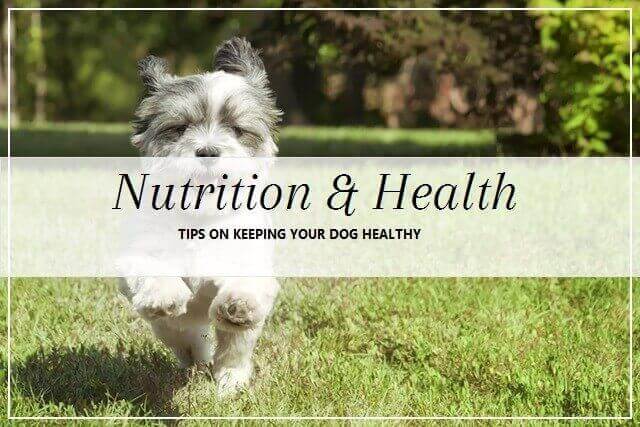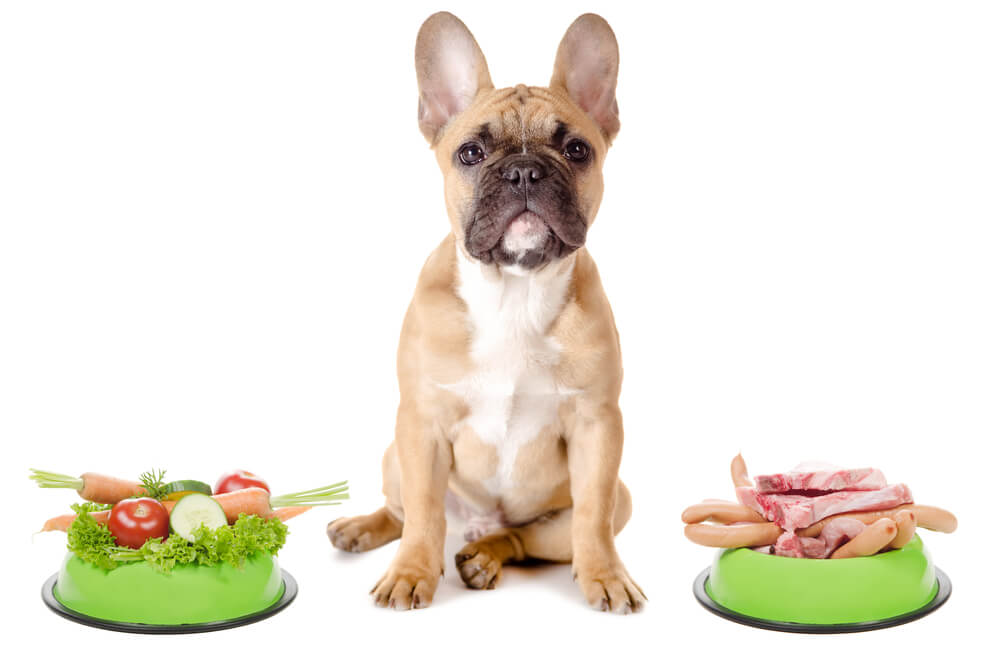A nutritious balanced diet is essential to keeping your dog healthy. There are numerous brands of food on the market, and with dog food companies spending millions on marketing it can be difficult to choose one that is of maximum benefit to your dog.
What constitutes a nutritional diet?
Simply put a nutritional diet is one that
– is high (60%+) in freshly prepared meat and / or fish
– has a good range of vegetables and fruits
– is ‘complete and balanced’ meaning it has all the vitamins and minerals your dog needs on a daily basis for optimal health
Whether you choose a home prepared diet or a manufactured dog food it is essential to ensure your dog gets the nutrition it needs. Like humans, dogs can survive on a junk food diet but won’t be very healthy for it and will suffer health problems over time. This results in unnecessary suffering for your dog and increased vet bills for you.
If opting for a manufactured food be sure to review the different brands and purchase the very best food you can afford. Read the labels thoroughly as many canned and dry foods can contain up to four times as much cereal content as meat and dogs are not designed to eat such a high content of refined starch. These cheap ingredients are used as fillers to bulk out the food and keep costs down for manufacturers and have little nutritional value for your dog. Raw food diets have been gaining in popularity; a raw food diet emphasises raw meat, bones, fruit and vegetables. If you are considering switching your dog to a raw food diet do your research to determine if this diet is right for your dog. When making any changes to your dog’s diet introduce the new food/diet gradually over 5-7 days increasing the amounts of the new food while decreasing the amount of the old food to avoid your dog getting an upset stomach or refusing to eat.
Whichever diet you choose it is important to know there are some foods that are can be fatal if ingested by your dog; these include chocolate, alcohol, grapes, raisins, onions, apple seeds, bread dough, xylitol, and macadamia nuts. Foods that are not life threatening but nevertheless should not be fed to your dog include ‘human junk food’ such as pizza, takeaways, cakes, biscuits, crisps, crackers, bread, chips, sweets, fried bacon, ice cream, and sausages. Read our blog here for more details on foods never to feed your dog.
Symptoms of poor nutrition
So how do you know if your dog is getting enough nutrients? The signs of poor nutrition are easy to spot and include
– Obesity
– Gastrointestinal problems such as diarrhoea, smelly wind, constipation, smelly stools, and excessive defecation
– Poor growth in puppies
– Lack of energy and weight loss in active dogs
– Poor dental hygiene
– Allergies and reduced immunity
– Excessive shedding
– Chronic ear infections
– Yeast overgrowth
– Itchy/dry/irritated skin and dull coat
If your dog is experiencing one or many of these symptoms it is recommended to first check with your vet to rule out any underlying health problems. If the problem is diet related you should research the most nutritional food you can feed your dog and make the changes to their diet as explained above. When seeking advice on dog nutrition it’s important to note that not all vets are brand agnostic. Just because you can purchase dog food in a vet does not make that brand of dog food the best for your dog. Therefore you should seek out advice from a holistic vet or dog nutritionist if you are unsure how to optimise your dog’s diet. The compare dog food brands check out the All About Dog food website.
Dog life stages
Once you have found a nutritious, well-balanced diet for your dog it is important to feed them as per their life stage as dogs at different life stages have different nutritional needs. Feeding a balanced diet that is appropriate for a dog’s life stage can help keep him strong and healthy and live a longer life. At all life stages, fresh water should be provided at all times.
Puppies: After weaning, puppies require higher levels of protein, fat, and minerals than the same breed adult dog to support their rapid growth and development. As the puppy’s stomach is small it requires smaller frequent meals, 4-6, rather than 1-2 meals per day. These nutritional requirements will gradually decrease as the puppy reaches adult weight.
Adults: In the adult stage (1 – 5/6 years) emphasis shifts to maintaining appropriate body conditions. Adult dogs should be fed 1-2 nutritionally balanced meals per day, However, their condition, health status, energy levels and weight need to be monitored and diet adjusted accordingly.
Seniors: Senior dogs (over 7 years) tend to be less active so their diet should contain lower levels of fat to help prevent obesity and a moderate level of proteins to maintain muscle mass while not overworking the kidneys. Age-related illness may occur so senior dogs should be monitored and any requirements incorporated into their diet.
Pregnant and lactating mums: Pregnant and lactating dogs need increased calories, protein, calcium and phosphorous, and an increase in their volume of food in the final 3 weeks of pregnancy to support weight gain of the foetuses. Meals should be small and frequent to accommodate the reduced abdominal space. Continue this calorific intake until puppies begin to wean 3-4 weeks after birth.
For information on how diet can impact the health of your dog’s skin checks out our blog Stop the Itch.


